This month sees the following articles in PPS that are in the top ten most accessed:-
Photoactivatable fluorophores and techniques for biological imaging applications
Wen-hong Li and Genhua Zheng
Photochem. Photobiol. Sci., 2012, Advance Article, DOI: 10.1039/C2PP05342J
Photo-oxidation of proteins
David I. Pattison, Aldwin Suryo Rahmanto and Michael J. Davies
Photochem. Photobiol. Sci., 2011, Advance Article, DOI: 10.1039/C1PP05164D
Applications of p-hydroxyphenacyl (pHP) and coumarin-4-ylmethyl photoremovable protecting groups
Richard S. Givens, Marina Rubina and Jakob Wirz
Photochem. Photobiol. Sci., 2012, 11, 472-488, DOI: 10.1039/C2PP05399C
Targeted photodynamic therapy of breast cancer cells using antibody-phthalocyanine-gold nanoparticle conjugates
Tanya Stuchinskaya, Miguel Moreno, Michael J. Cook, Dylan R. Edwards and David A. Russell
Photochem. Photobiol. Sci., 2011, 10, 822-831, DOI: 10.1039/C1PP05014A
Using photolabile protecting groups for the controlled release of bioactive volatiles
Andreas Herrmann
Photochem. Photobiol. Sci., 2012, 11, 446-459, DOI: 10.1039/C1PP05231D
Environmental effects of ozone depletion and its interactions with climate change: progress report, 2011
United Nations Environment Programme, Environmental Effects Assessment Panel
Photochem. Photobiol. Sci., 2012, 11, 13-27, DOI: 10.1039/C1PP90033A
Bichromophoric fluorescent photolabile protecting group for alcohols and carboxylic acids
Sebastian van de Linde, Ivan Krstić, Thomas Prisner, Sören Doose, Mike Heilemann and Markus Sauer
Photochem. Photobiol. Sci., 2011, 10, 499-506, DOI: 10.1039/C1PP05317E
Exploring structural change of protein bovine serum albumin by external perturbation using extrinsic fluorescence probe: spectroscopic measurement, molecular docking and molecular dynamics simulation
Sankar Jana, Shalini Ghosh, Sasanka Dalapati and Nikhil Guchhait
Photochem. Photobiol. Sci., 2012, 11, 323-332, DOI: 10.1039/C1PP05180F
Energy transfer from a rhodamine antenna to a ruthenium-bipyridine center
Oscar Filevich, Beatriz García-Acosta and Roberto Etchenique
Photochem. Photobiol. Sci., 2012, Advance Article, DOI: 10.1039/C2PP05415A
Photoelectrochemical, photophysical and morphological studies of electrostatic layer-by-layer thin films based on poly(p-phenylenevinylene) and single-walled carbon nanotubes
L. C. P. Almeida, V. Zucolotto, R. A. Domingues, T. D. Z. Atvars and A. F. Nogueira
Photochem. Photobiol. Sci., 2011, 10, 1766-1772, DOI: 10.1039/C1PP05221G
Why not take a look at the articles today and blog your thoughts and comments below.
Fancy submitting an article to PPS? Then why not submit to us today or alternatively email us your suggestions.











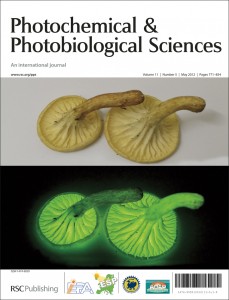
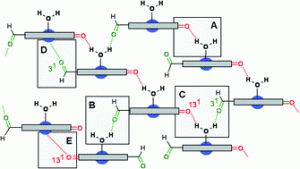

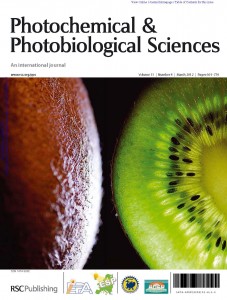
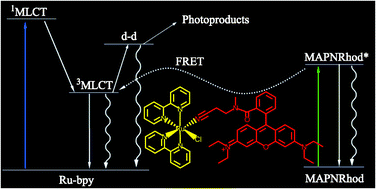 In a recently published PPS article a team from Argentina demonstrate a way to enable a photodissociation reaction at longer wavelengths by utilising a modified rhodamine B (Rhod) cooridinated to a bis-bipyridine ruthenium (II) (Ru-bpy) phototrigger complex which has enhanced absorption of green light.
In a recently published PPS article a team from Argentina demonstrate a way to enable a photodissociation reaction at longer wavelengths by utilising a modified rhodamine B (Rhod) cooridinated to a bis-bipyridine ruthenium (II) (Ru-bpy) phototrigger complex which has enhanced absorption of green light. 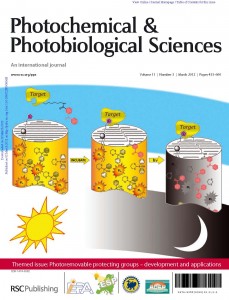
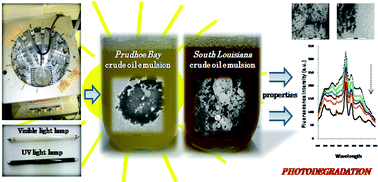 What if you could disperse oil spills in the sea, such as the BP spill in the Gulf of Mexico, with air, sunlight, and an environmentally friendly botanical product? These are the ingredients used in a recently published article from Professor Steven Suib and his team from the University of Conneticut, USA. The study found that by adding a plant-based surfactant to a sample of synthetic seawater mixed with crude oil, pumping in air, stirring the sample and exposing it to ultraviolet light, the oil/water mixture quickly broke down into small particles.
What if you could disperse oil spills in the sea, such as the BP spill in the Gulf of Mexico, with air, sunlight, and an environmentally friendly botanical product? These are the ingredients used in a recently published article from Professor Steven Suib and his team from the University of Conneticut, USA. The study found that by adding a plant-based surfactant to a sample of synthetic seawater mixed with crude oil, pumping in air, stirring the sample and exposing it to ultraviolet light, the oil/water mixture quickly broke down into small particles.